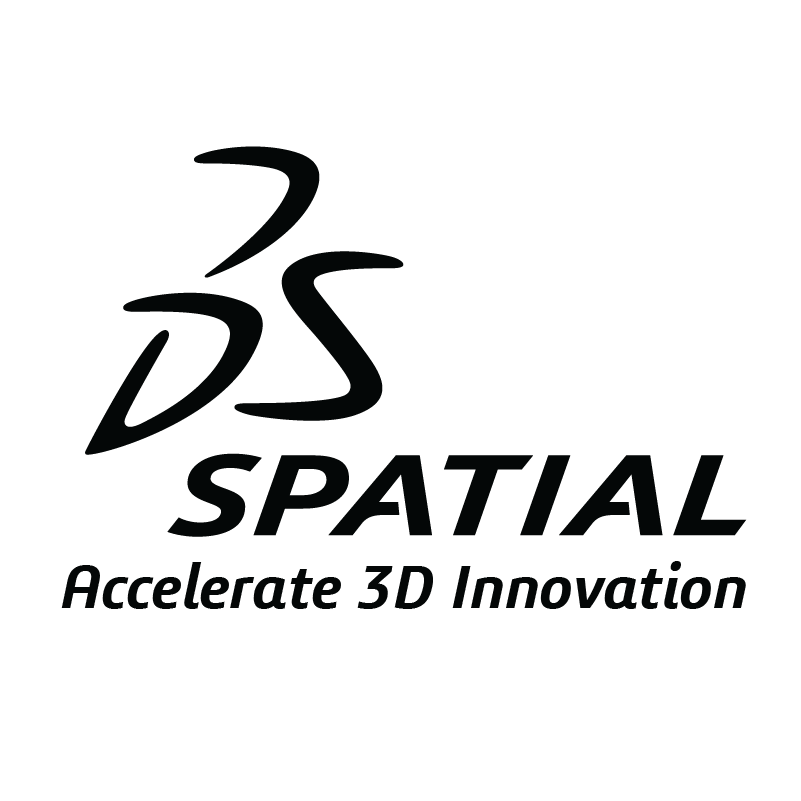NEW PLATFORM DELIVERS INTEGRATED DASSAULT SYSTÈMES TECHNOLOGY
Broomfield, CO – June 29, 2010 - Spatial Corp., the leading provider of integrated 3D development components for engineering and manufacturing software applications, today announces Beta availability of RADF R3.0, a 3D development platform for desktop and cloud-based applications, and Convergence Geometric Modeler (CGM), a 3D geometric modeler used in Dassault Systèmes’ V5 and V6 products. RADF is the industry’s first Web-enabled development platform, enabling the use of a single code base for both desktop and web-based applications. The platform reduces development complexities by providing an application framework and integrated components in an extensible architecture. CGM offers proven, 3D modeling capabilities for application developers with an end-user need for native V5 compatibility.
"We are very excited to be able to offer Dassault Systèmes technology to our 3rd-party development community. By leveraging the engineering talent within Dassault Systèmes, we are able to expand our portfolio of software components, while maintaining focus on Spatial developed technology and advancing our application development platform to support cloud-based applications. Today, developers need more than individual software components. They need integrated technology and a way to deliver products when and where their customers need them," stated Keith Mountain, Spatial CEO. "We are also pleased to have CGM as the first of many V6 technologies we will offer our customers."
Most engineering and manufacturing applications use a range of software components for functions such as 3D modeling, CAD translation and visualization. While 3D components offer time-to-market advantages, today’s greater development challenge is to ensure high-quality integration between the various components, and to leverage the latest technologies for delivery of both desktop and web-based applications. RADF R3.0 provides a foundation for desktop and cloud-based application distribution, lowering the cost of deployment, reducing development complexities, and ensuring higher software reliability with lower cost of support.
ABOUT RADF R3.0
Rapid Application Development Framework (RADF) R3.0 is an integrated development platform for the development of Windows-based desktop and web-based applications. Application code written for the desktop client is reusable in the web client – enabling prototype workflows in the desktop scripting engine to be published for use by web clients. The platform greatly simplifies the development and delivery of applications at the desktop or in the cloud.
RADF R3.0 includes:
RADF Core: a development platform that integrates 3D software components for higher software reliability while enabling custom application workflows in an extensible .NET framework.
RADF Desktop: an application starter kit with 3D model views; tabbed docking of viewports; WPF GUI elements and Ribbon Toolbars; 3D view controls; high performance rendering; and a plug-in architecture.
RADF Web: a client-server infrastructure that enables interactive high-performance browser clients to drive server-based fully-functional 3D engineering applications. Custom modeling operations and business logic written for the RADF Desktop client are reusable in the web client.
ABOUT CONVERGENCE GEOMETRIC MODELER (CGM)
CGM is a componentized version of the geometric kernel used in Dassault Systèmes’ V5 and V6 products. The component offers exceptional geometry robustness with very powerful blending, Booleans, surfacing, and native interoperability with CATIA V5. V5 interoperability ensures model integrity and geometry fidelity across applications, an important benefit for many manufacturers. CGM also brings an advanced architecture which integrates wire, surface and solid modeling functionality for history-based or direct modeling applications.
CGM key capabilities include:
Boundary Representation (B-rep) Modeling: the standard modeling paradigm for design, manufacturing and engineering applications
Multi-Dimensional Modeling: a rich toolset to define and manipulate solid, surface and wire geometry
History Based Modeling: a design structure that tracks model changes and supports relationships between entities
Model Construction: a comprehensive set of functionality to create and edit wire, solid and sheet bodies
Free-form Model Design: a design option with advanced surfacing functionality
Faceting: a function for generating a polygonal representation of the 3D model
"We are pleased to offer V6 technology to the 3D development community to enable new, innovative applications on the desktop or in the cloud. Our customers benefit through greater collaboration when their applications share the same underlying technology," stated Pascal Daloz, Dassault Systèmes EVP Strategy and Marketing. "Spatial is a recognized technology leader within the 3rd-party development community and is well positioned to support Dassault Systèmes commitment to V6 openness and extend its reach."
To learn more about RADF R3.0 and CGM please visit:
About Spatial
Spatial Corp., a Dassault Systèmes subsidiary, is the leading provider of integrated 3D development components for engineering and manufacturing applications across a broad range of industries. Spatial’s application development platform and 3D software components help application developers deliver market-leading products, maintain focus on core competencies, and reduce time-to-market. Spatial 3D components have been adopted by some of the world's most recognized software developers, manufacturers, research institutes, and universities. Headquartered in Broomfield, Colorado, Spatial has offices in the USA, Germany, Japan, China and the United Kingdom. For more information, please visit
Spatial:
Howie Markson
(303) 544-2966

